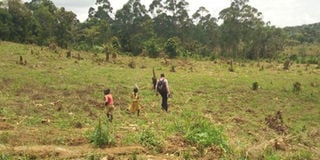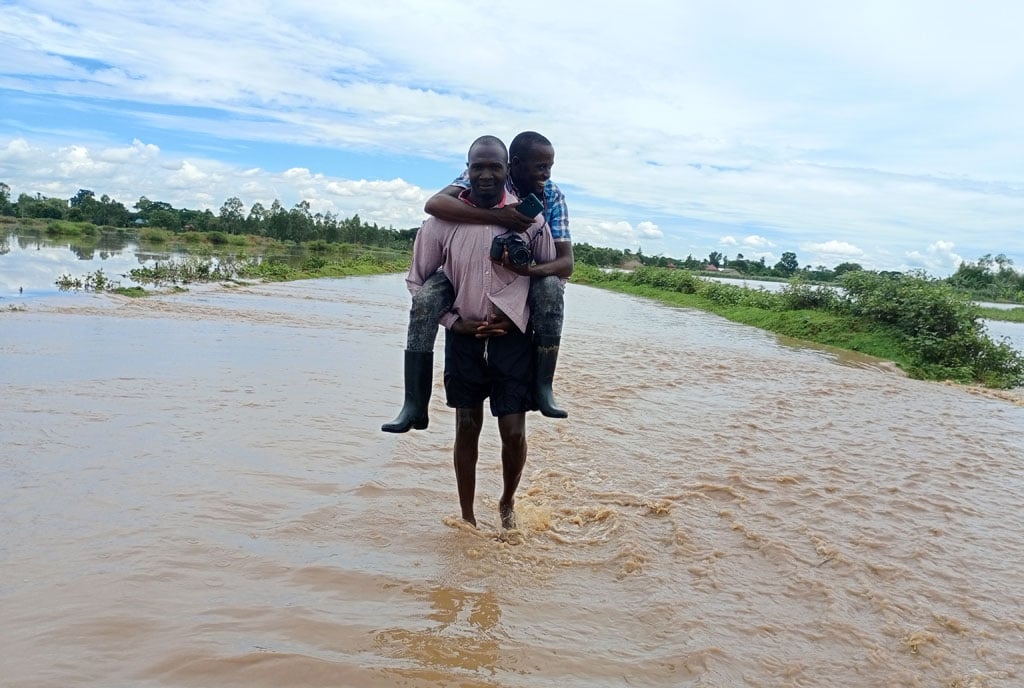Gomba forest cover vanishes

Consequences. A section of Wabinyomo Forest Reserve in Gomba District, which has been cut down. PHOTO BY MOSES MUWULYA
What you need to know:
- Mr Godfrey Kiviiri, the Gomba District chairperson says as a district they are ready to work with NFA to restore depleted forests in the district.
- According to Mr Kiviri, the most cut down tree species are those that make high value furniture, including Mahogany, Mivule and Musizi.
GOMBA. Despite lying in a cattle corridor, Gomba District is endowed with natural forests.
Environmentalists are, however, worried that little is being done to protect the forests. This is because the district’s 17 forest reserves are facing uncontrolled depletion, degradation and encroachment.
Mr Francis Matovu Nsibirwa, the chairperson Mpenja Sub-county, says despite their efforts as leaders to protect the environment, they have lost huge chunk of forests to encroachers. This, he attributes to mainly charcoal burning, as opposed to cutting timber where only big trees are targeted.
Protected encroachers
“The people who do it [charcoal burning] are not even residents in the area, they are from other areas and do everything in the face of the forest rangers. They [encroachers] look like commoners but they have big wigs behind them,” he says.
The 2017 Auditor General’s report indicates that Kagongo, Buzimba, Kalo and Sembula forest reserves in the district, which cover 270 hectares, have been degraded, and Nsowe and Kalombi forests, which cover 3,900 hectares, have been encroached on.
The district largely depends on River Katonga for water for domestic use and watering cattle but due to massive encroachment on the forests in its catchment area, it is drying up.
The river’s water level, according to Mr Francis Byarugaba, the Sembabule natural resources officer, has drastically reduced and one can cross it on foot from Boma in Sembabule to Mubende. “If we continue like this, in 20 to 40 years, we may not even get rainfall unless we undertake quick mitigation measures,” Mr Byarugaba says.
Biodiversity
He adds that deforestation has also affected biodiversity because Katonga area is no longer a habitat for the endangered black and white Columbus monkeys.
Mr David Kureeba, the programme coordinator of the National Association of Professional Environmentalists, says the district is headed for tough times, especially in terms of agricultural productivity, which will affect food security in the area.
Experts say
“Species sustainability is based on multiplication and without forests and reserved ecosystem, this cannot happen. This means areas such as Gomba face hard times in future if nothing is done,” Mr Kureeba warns.
Last year, the National Forest Authority (NFA) ordered more than 400 herdsmen occupying Nsowe and Kalombi forest reserves to vacate.
However, NFA later halted the move over fear that their animals would spread the foot and mouth (FMD) disease to other areas.
Ms Aisha Alibhai, the NFA spokesperson, says they are waiting for the containment of FMD to enforce the eviction order.
She says they are also implementing a collaborative forest management strategy with local authorities to encourage encroachers and communities participate in restoring the reserve.
Mr Godfrey Kiviiri, the Gomba District chairperson says as a district they are ready to work with NFA to restore depleted forests in the district.
According to Mr Kiviri, the most cut down tree species are those that make high value furniture, including Mahogany, Mivule and Musizi.



